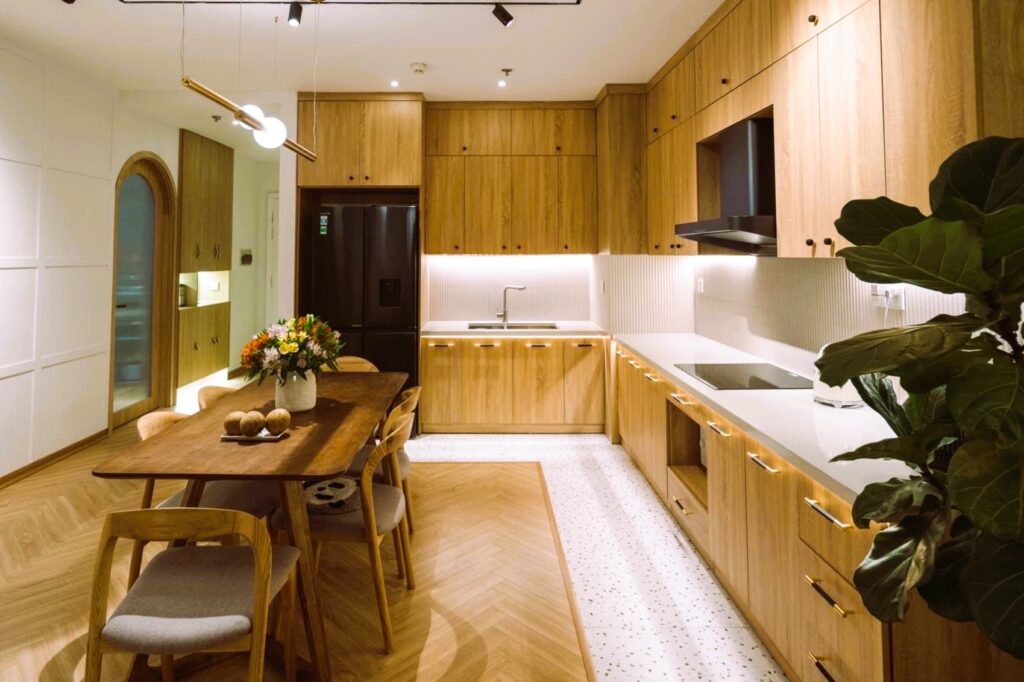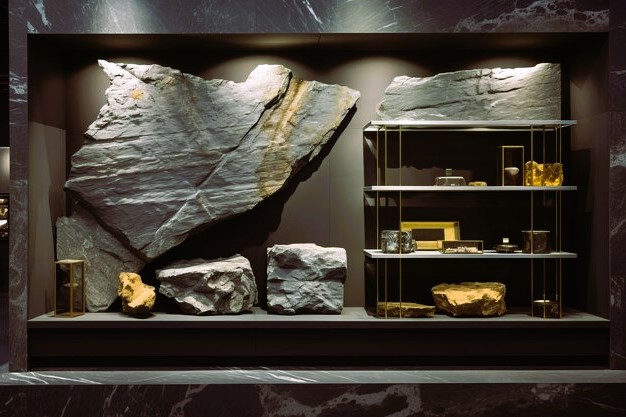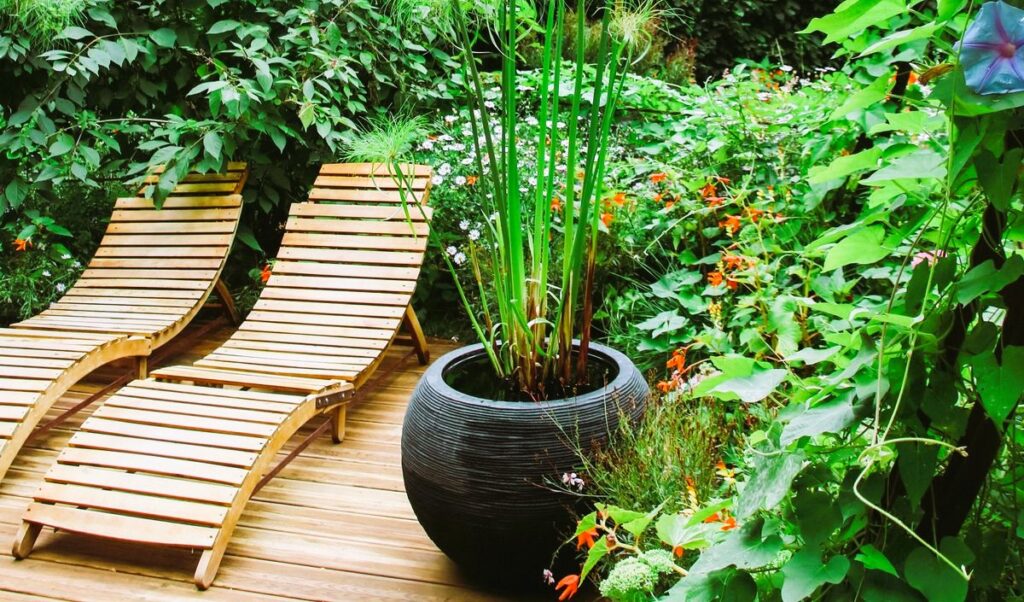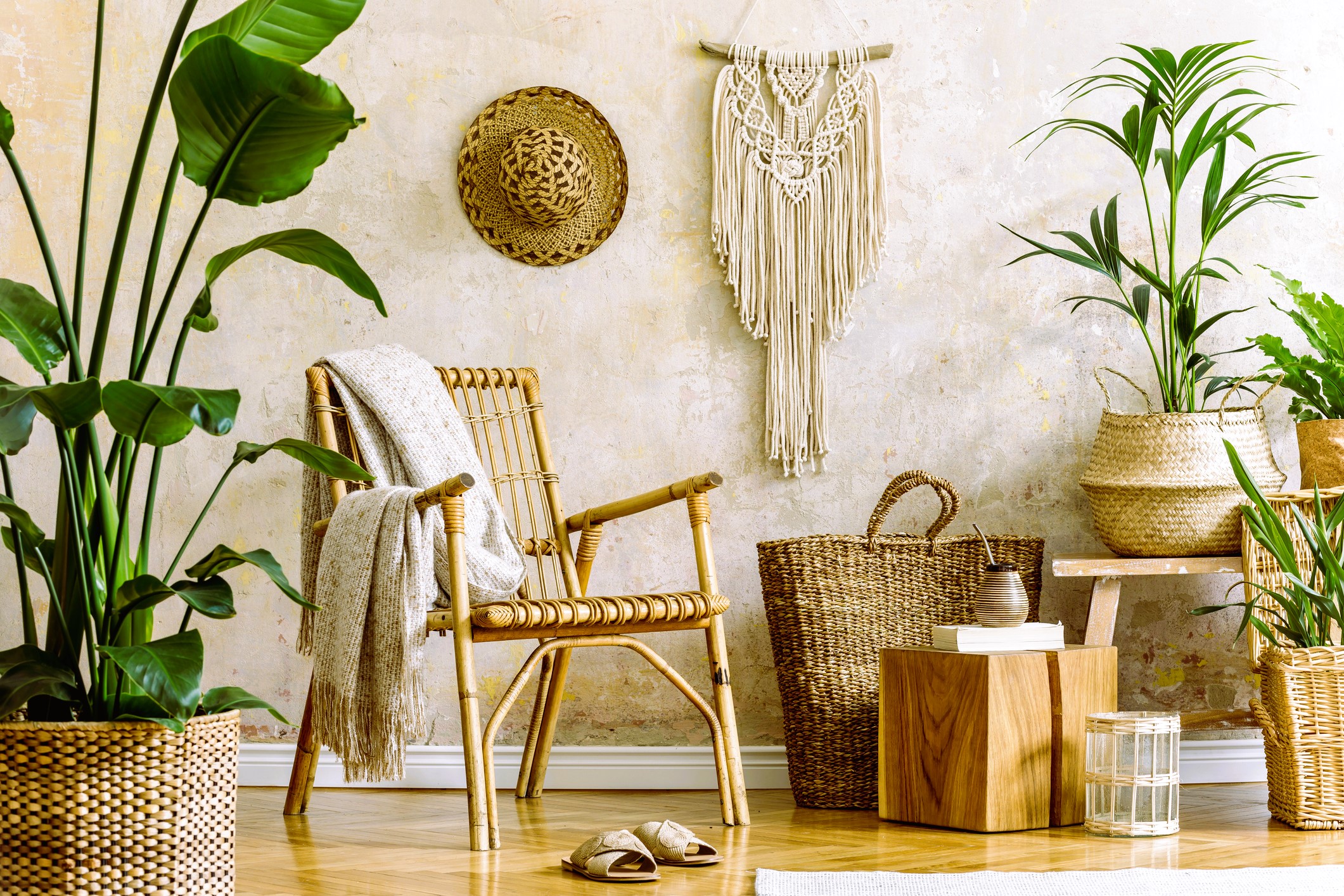In the realm of interior design, the use of natural elements has gained widespread popularity for its ability to infuse spaces with warmth, texture, and a connection to the outdoors. Embracing materials such as wood, stone, and greenery allows for a harmonious blend of aesthetics and functionality, creating environments that feel inviting, serene, and grounded. In this article, we’ll explore the art of decorating with natural elements, delving into the unique characteristics of wood, stone, and greenery, and offering tips on how to incorporate them into your living spaces.
Wood: Timeless Elegance and Warmth
Wood is a versatile and timeless material that has been a staple in interior design for centuries. Its warmth, texture, and variety of finishes make it suitable for a range of decorating styles. Here are some ways to incorporate wood into your home decor:
1. Flooring:
Wooden flooring adds a touch of elegance and warmth to any room. Whether you prefer the classic appeal of hardwood or the eco-friendly option of bamboo, wooden floors create a seamless and inviting look.
2. Furniture:
Invest in wooden furniture pieces to bring a sense of nature indoors. From rustic farmhouse tables to sleek modern chairs, the options are diverse. Mix and match different wood tones for added visual interest.
3. Accent Walls:
Create a focal point in a room by introducing a wooden accent wall. Whether using reclaimed wood panels or installing shiplap, this design element adds character and a connection to nature.
4. Wooden Beams:
Exposed wooden beams can add architectural interest to a space. Whether real or faux, beams contribute to a cozy, rustic atmosphere, particularly in living rooms or kitchens.

5. Decorative Objects:
Incorporate small wooden accents and decor items such as bowls, frames, and sculptures. These subtle touches contribute to the overall aesthetic while adding warmth and character.
6. Natural Finishes:
Opt for furniture with natural wood finishes instead of painted or artificially colored surfaces. This allows the natural grain and texture of the wood to shine through.
7. Outdoor Furniture:
Extend the warmth of wood to your outdoor spaces by choosing wooden patio furniture. Teak, cedar, and eucalyptus are popular choices for their durability and resistance to the elements.
Stone: Timeless Beauty and Earthy Elegance
Natural stone brings a sense of timeless beauty and earthy elegance to interior spaces. From countertops to accent walls, the use of stone can elevate the overall aesthetic of a room. Consider the following ways to incorporate stone into your decor:
1. Kitchen Countertops:
Granite, marble, and quartz are popular choices for kitchen countertops. Not only are they durable and heat-resistant, but they also add a touch of luxury to the heart of the home.
2. Fireplace Surrounds:

Stone fireplace surrounds create a focal point in living rooms and add a rustic or contemporary flair, depending on the type of stone used. Consider natural stones like slate, limestone, or river rock.
3. Bathroom Surfaces:
Extend the beauty of stone to your bathroom by using natural stone for vanity countertops, shower walls, or even freestanding bathtubs. It brings a spa-like atmosphere to the space. Find answers to these 5 questions before hiring a roofer.
4. Accent Walls:
Covering a wall with stone, whether it’s a textured slate or a smooth travertine, adds depth and character to a room. This is especially effective in entryways or living areas.
5. Flooring:
Stone flooring, such as marble or limestone tiles, creates a cool and sophisticated atmosphere. It’s an excellent choice for entryways, bathrooms, or any area where a touch of luxury is desired.
6. Outdoor Pathways:
Extend the use of natural stone to your outdoor landscaping. Stone pathways or patio pavers add a natural and durable surface to your garden or outdoor living space.
7. Stone Accents:
Incorporate small stone accents through decorative objects like vases, sculptures, or even stone coasters. These subtle touches can tie the theme together.
Greenery: Bringing the Outdoors In
Integrating greenery into interior design not only adds a pop of color but also promotes a sense of well-being and connection to nature. Whether through houseplants, floral arrangements, or botanical prints, here are ways to embrace greenery in your decor:
1. Houseplants:
Introduce houseplants into various rooms to purify the air and create a lively atmosphere. Choose plants that thrive indoors, such as snake plants, pothos, or succulents.
2. Vertical Gardens:
For those with limited floor space, consider vertical gardens. These installations allow you to grow herbs, flowers, or even small vegetables in a vertical arrangement on walls.
3. Floral Arrangements:
Fresh flowers in vases or dried flowers in decorative arrangements bring a touch of nature to any space. Consider seasonal blooms or flowers that complement your color scheme.
4. Botanical Prints:
Incorporate artwork featuring botanical prints or illustrations. This can be in the form of paintings, framed prints, or even botanical wallpaper.
5. Herb Gardens:
Bring functionality to your green decor by cultivating a kitchen herb garden. Planting herbs like basil, mint, or rosemary not only adds greenery but also provides fresh ingredients for cooking.
6. Terrariums:
Create miniature ecosystems with terrariums. These glass containers house small plants and can be a unique and eye-catching addition to tabletops or shelves.
7. Window Gardens:
Utilize windowsills for small potted plants or herb gardens. This not only adds a touch of greenery but also maximizes natural light exposure for the plants.
Harmonizing Wood, Stone, and Greenery: Tips for Balance
While each natural element—wood, stone, and greenery—brings its unique charm to a space, achieving balance is key to a harmonious interior. Consider the following tips for effectively combining these elements:
1. Consider Color Palette:
Ensure that the colors of wood, stone, and greenery complement each other. A cohesive color palette creates a sense of unity and balance in the room.
2. Texture Variation:
Vary the textures of wood and stone to add depth to your decor. For example, pair smooth stone surfaces with textured wooden furniture or vice versa.
3. Scale and Proportion:
Consider the scale of each element in relation to the size of the room. Avoid overwhelming smaller spaces with large, heavy furniture or too much greenery.

4. Use Greenery as an Accent:
Greenery can serve as an accent color in a predominantly neutral or earth-toned space. This allows the vibrancy of plants to stand out.
5. Natural Light:
Maximize natural light in the room to showcase the beauty of wood and stone. Position houseplants strategically to benefit from sunlight.
6. Transitional Elements:
Incorporate transitional elements that seamlessly blend wood and stone. For example, a wooden coffee table on a stone-tiled floor creates a smooth transition between the two materials.
7. Cohesive Theme:
Establish a cohesive theme that ties together wood, stone, and greenery. This could be inspired by a particular design style, such as Scandinavian, rustic, or modern.
8. Functional Integration:
Make the elements functional. For instance, a wooden dining table surrounded by greenery creates a harmonious and functional dining space.
Conclusion
Decorating with natural elements is a timeless approach that brings the beauty of the outdoors into your living spaces. Wood, stone, and greenery each contribute unique qualities, creating a balanced and inviting atmosphere. By carefully considering their characteristics and incorporating them thoughtfully, you can achieve a harmonious and aesthetically pleasing home.
For more in-depth information on interior design standards and practices, you can explore reputable sources such as Canada.ca. These sources provide valuable insights into design principles, material selection, and sustainable practices for creating inviting and well-balanced interiors.


